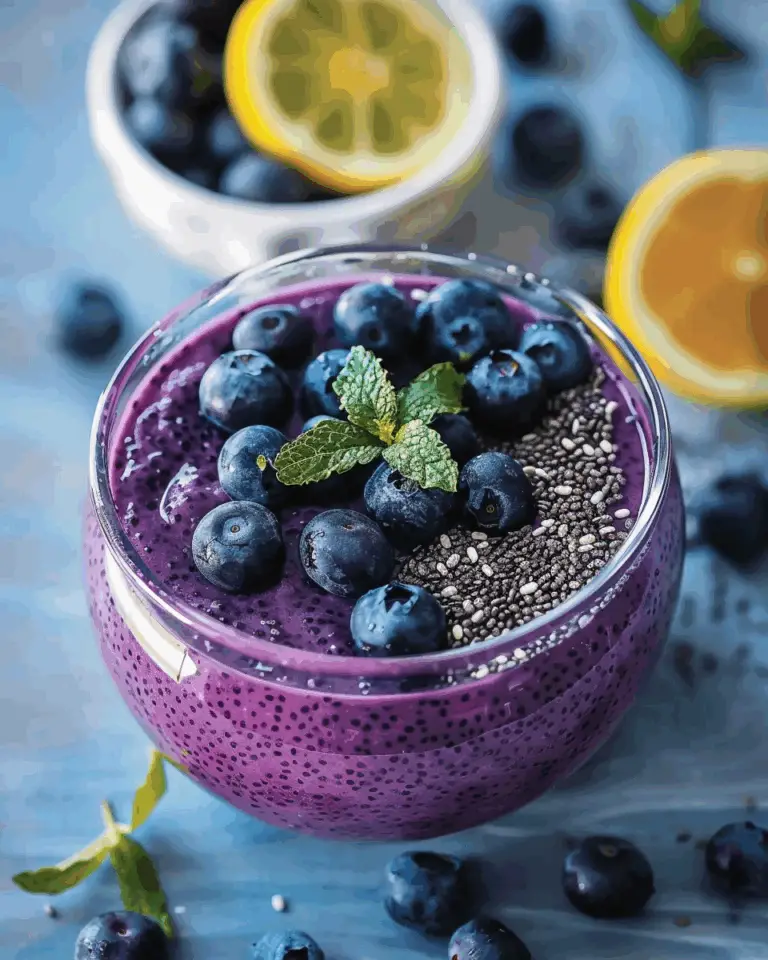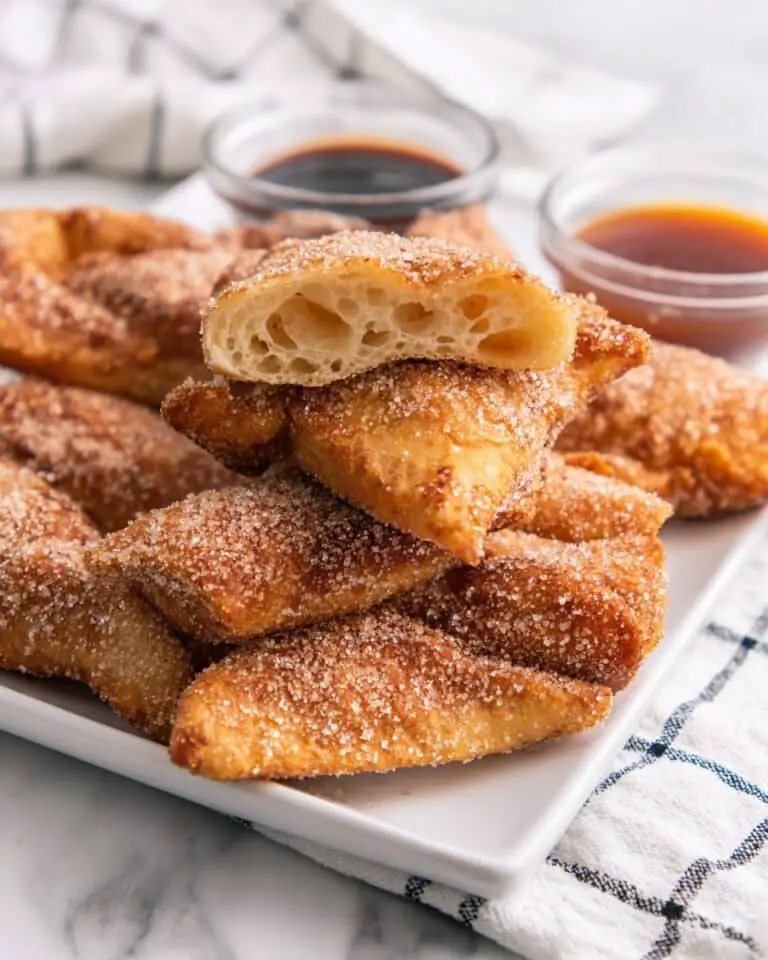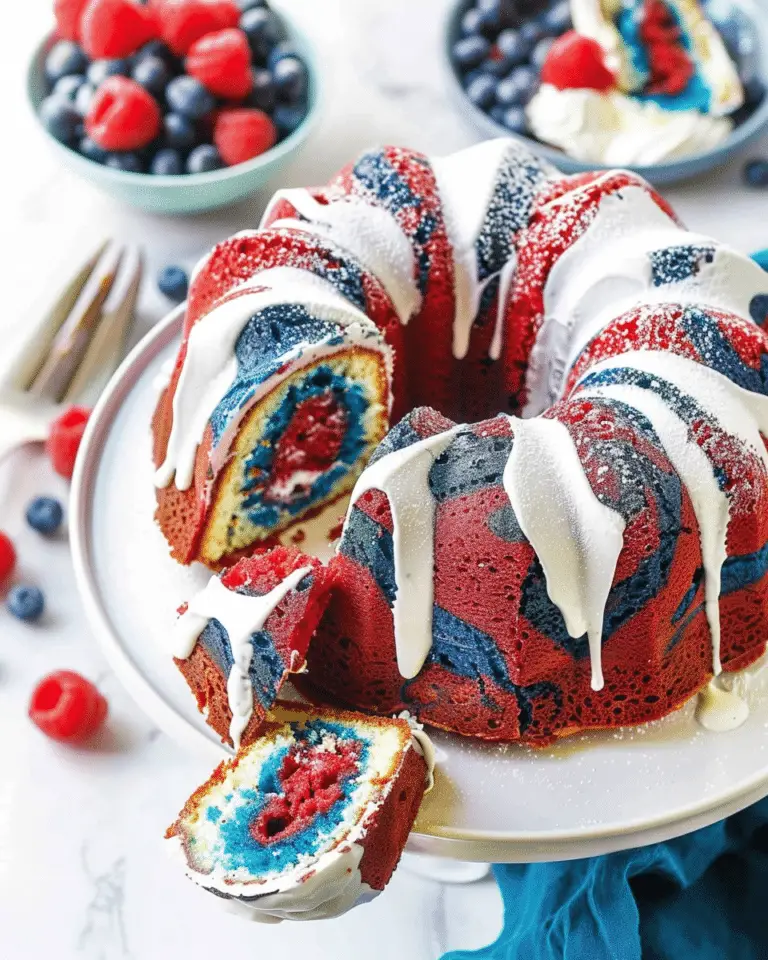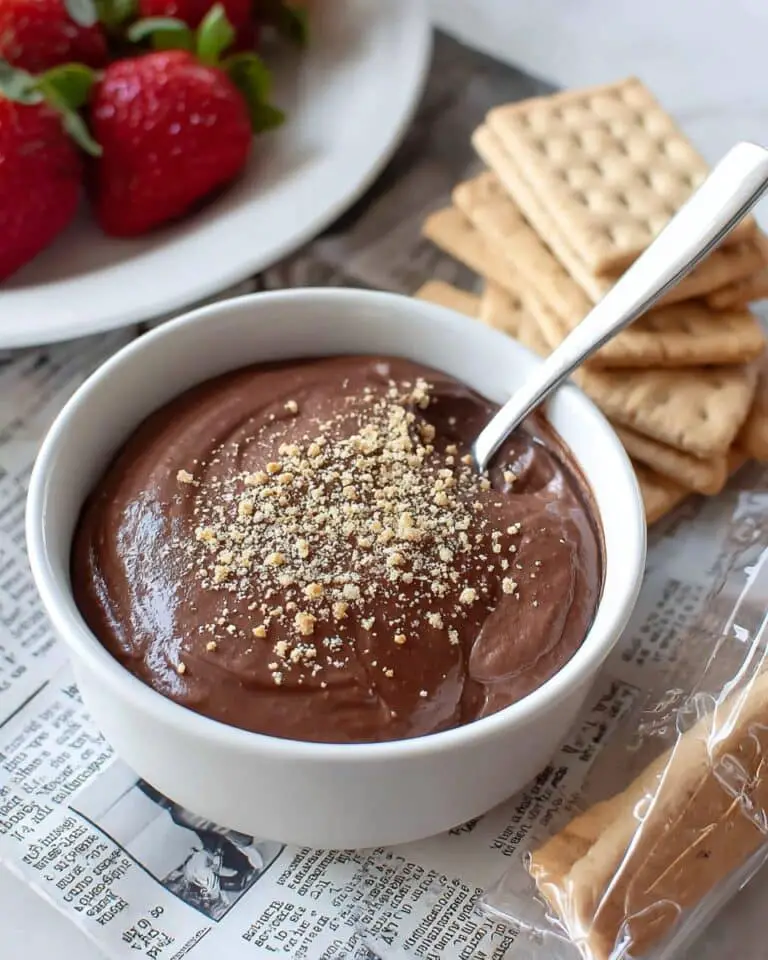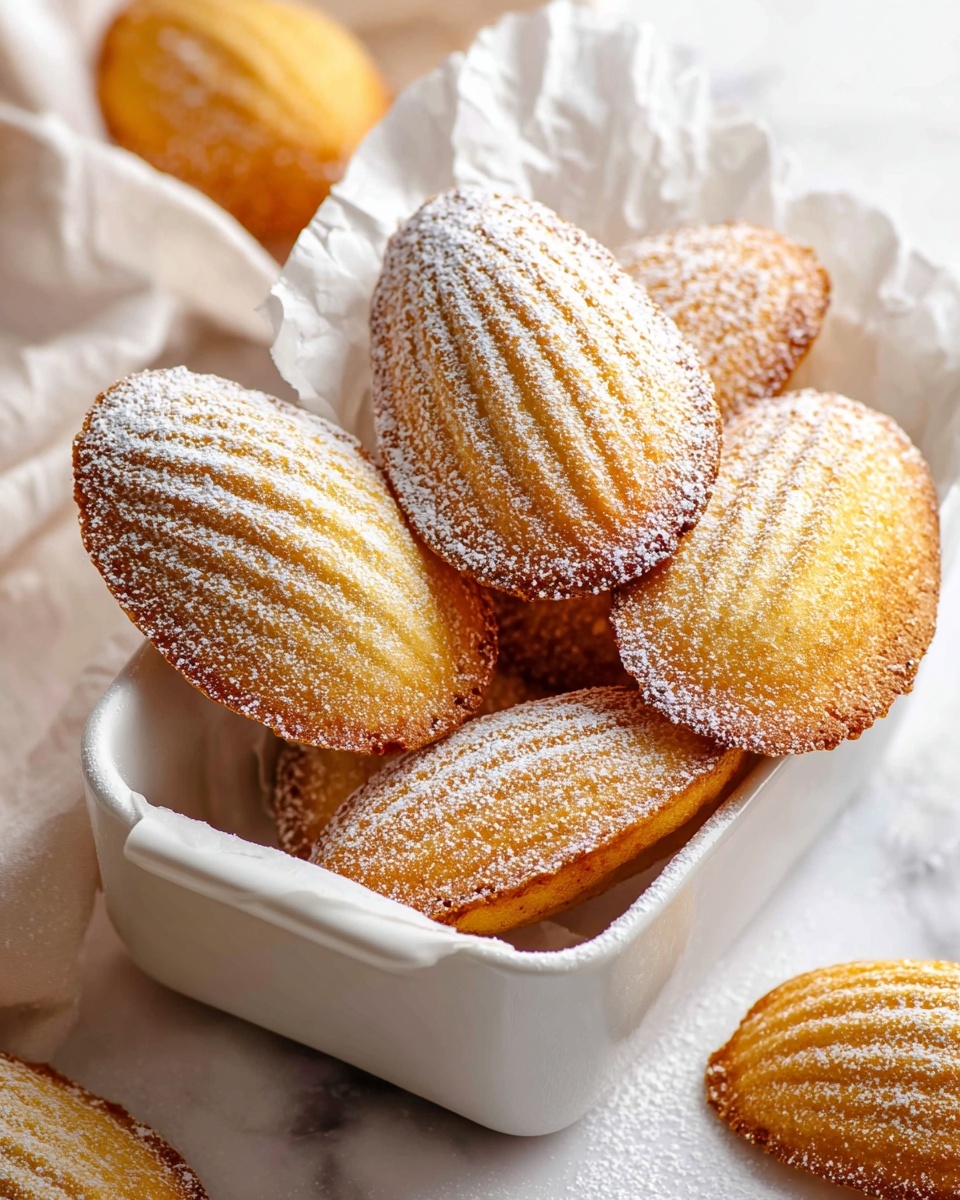
If you’ve ever wanted to bring a little piece of Paris into your kitchen, this Classic French Madeleines Recipe is your golden ticket. These dainty, shell-shaped sponge cakes are a delightful combination of buttery richness, lemony brightness, and a delicate, tender crumb that just melts in your mouth. Made with simple, wholesome ingredients and a bit of patience, these madeleines have a slightly crisp edge with a soft, pillowy center that makes them an irresistible treat for tea time or any moment you want to feel a bit fancy.
Ingredients You’ll Need
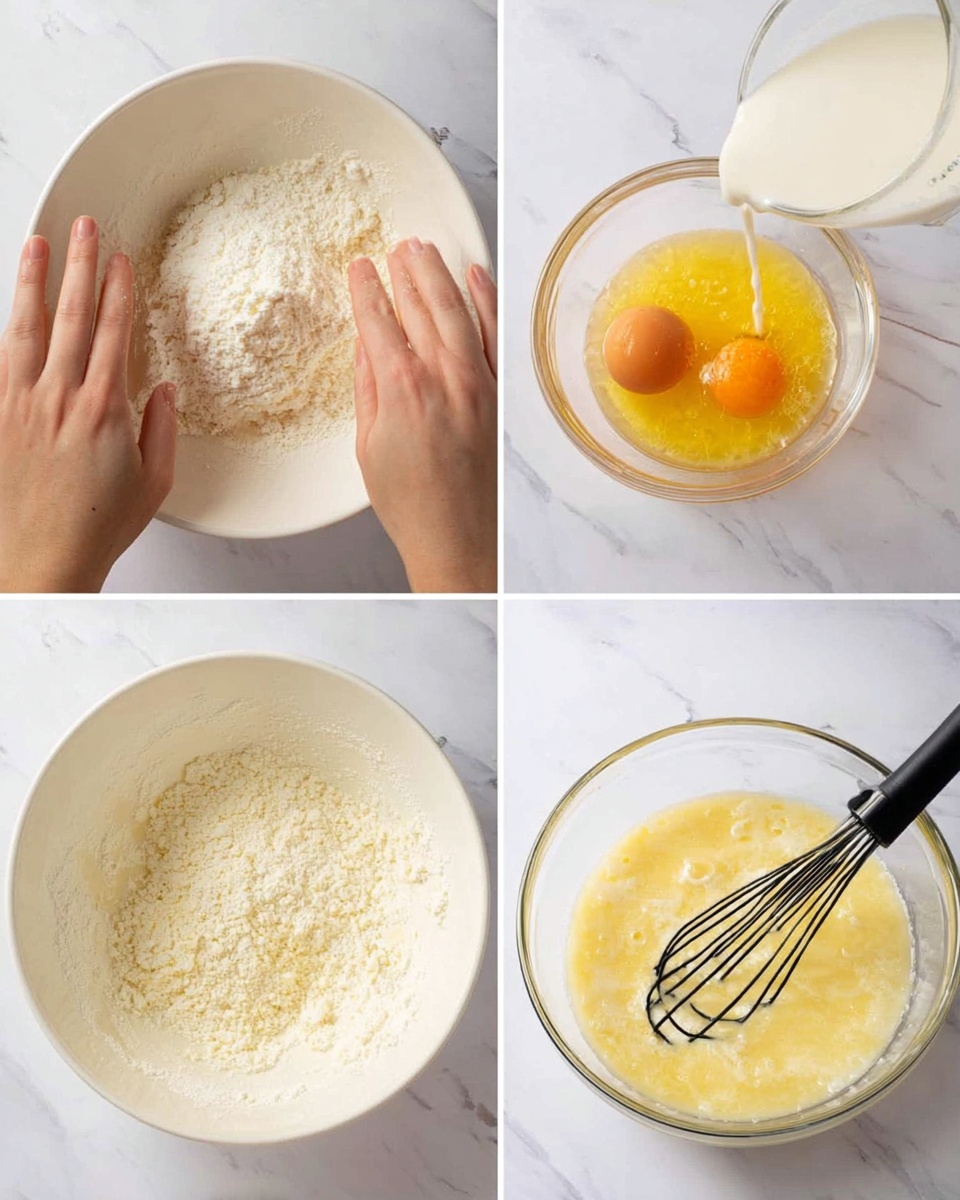
Every ingredient in this Classic French Madeleines Recipe plays a starring role in creating the perfect balance of flavor and texture. From the nutty depth of browned butter to the fresh zing of lemon zest, each component contributes to these little cakes’ classic appeal.
- Brown butter: Provides a rich, nutty flavor that is essential for authentic taste and aroma.
- Granulated sugar: Sweetens the batter while working with the lemon zest to create a fragrant, flavorful crust.
- Lemon zest: Adds a bright, fresh citrus note that lifts the entire recipe.
- Whole milk: Keeps the batter moist and tender.
- Vanilla extract: Gives depth and warmth, perfectly complementing the lemon.
- Eggs: Provide structure and richness, helping achieve that signature delicate crumb.
- All-purpose flour: Forms the base of the batter, ensuring the right lightness.
- Baking powder: Gives a gentle rise, crucial for the characteristic madeleine “hump.”
How to Make Classic French Madeleines Recipe
Step 1: Brown the Butter
Start by melting your unsalted butter over medium heat and cook it until it turns a beautiful golden brown with a nutty aroma that fills the kitchen. This step is key because it deepens the flavor and adds a subtle toasted note that sets these madeleines apart. After browning, let the butter cool to room temperature before mixing it into the batter.
Step 2: Infuse Sugar with Lemon Zest
While the butter is cooling, zest a fresh lemon finely over a small bowl. Massage the lemon zest into the granulated sugar for about a minute. This little trick helps release the oils from the zest and distributes the bright citrus flavor evenly throughout the sweet base of the madeleines.
Step 3: Whisk Eggs and Sugar
Using a hand whisk or electric mixer, beat together the eggs and lemon-infused sugar until the mixture becomes lightened in color and slightly thickened—this usually takes about three minutes. This step builds volume and creates a delicate texture for your cakes. Then gently mix in the whole milk and vanilla extract to add moisture and aroma.
Step 4: Add Dry Ingredients Carefully
Sift the flour and baking powder together to avoid lumps and create a light batter. Gradually fold the flour mixture into your wet ingredients in two to three additions. Use a spatula and mix delicately to avoid overmixing because you want to maintain an airy batter that will rise beautifully when baked.
Step 5: Incorporate Brown Butter
Slowly fold the cooled brown butter into the batter. This step incorporates the rich, nutty flavor and helps bring everything together for that iconic madeleine taste. Take your time to ensure it’s evenly mixed without deflating your batter.
Step 6: Chill the Batter
Cover your bowl with parchment or cling film and refrigerate for at least 12 hours, ideally overnight or up to 24 hours. Chilling the batter is vital for developing the flavors and ensuring the madeleines bake up with their signature hump and fine crumb.
Step 7: Prepare and Preheat
When you’re ready to bake, generously grease your madeleine pan cavities with melted butter and dust them lightly with flour. This helps the cakes release easily after baking. Freeze the pan for about five minutes to firm it up, then preheat your oven to 200°C (390°F).
Step 8: Fill the Pan
Fill each cavity about 75% full with the chilled batter, using a spoon or piping bag for accuracy. Place the pan back in the freezer for another five minutes. This quick chill creates a temperature contrast that helps achieve the perfect bubbly rise and crispy edges.
Step 9: Bake for Perfect Texture
Bake the madeleines initially for six minutes at 200°C (390°F) to encourage that classic domed shape, then reduce the heat to 180°C (355°F) and bake for another seven minutes until the edges are golden and the centers are springy. Oven temperatures vary, so feel free to experiment to find what works best for your setup.
Step 10: Cool and Serve
Once baked, immediately remove the madeleines from the pan to cool on a wire rack. Dust them lightly with powdered sugar right before serving for a lovely traditional finish that enhances their buttery sweetness and delicate crunch.
How to Serve Classic French Madeleines Recipe
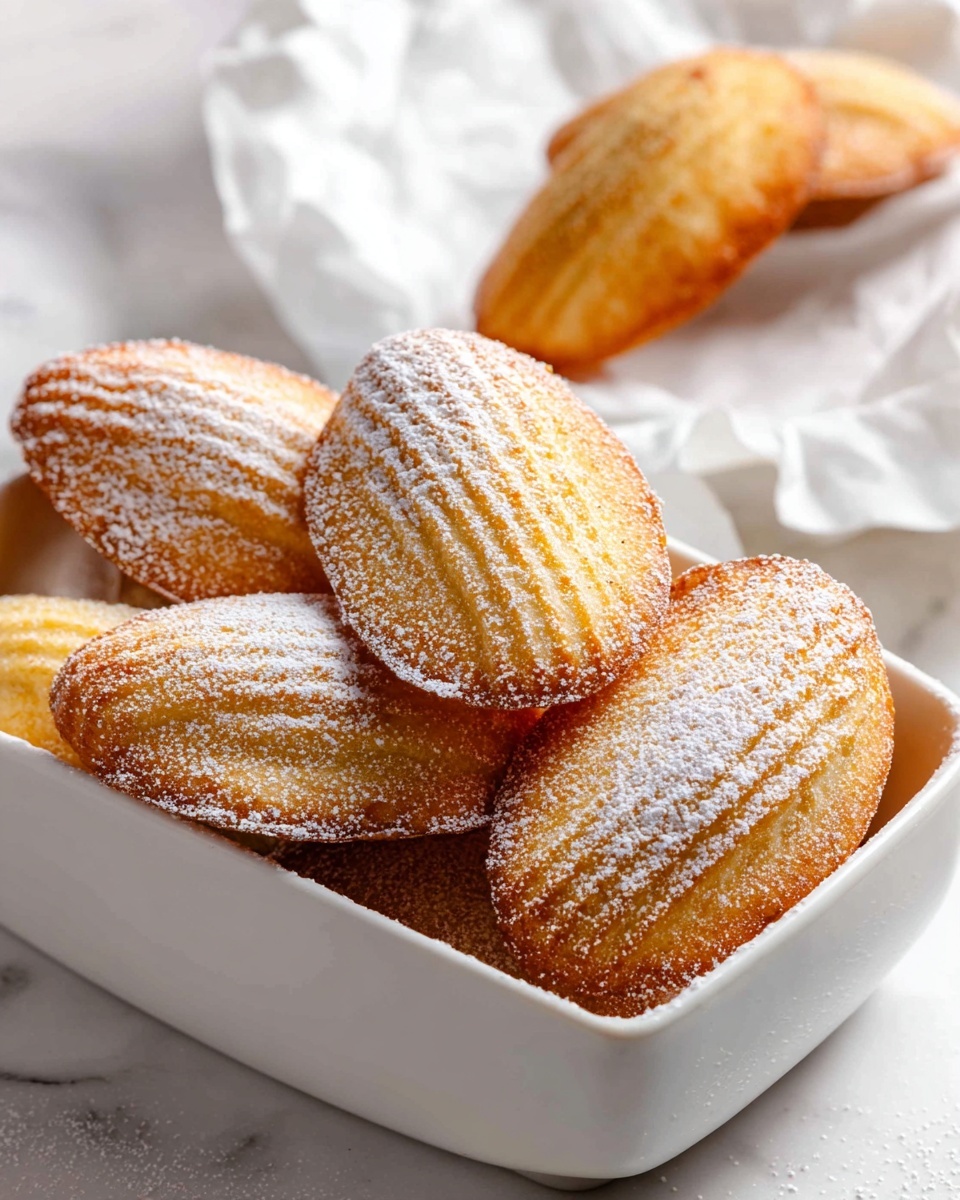
Garnishes
Classic dustings of powdered sugar always do the trick, but to elevate your presentation, try dusting with a bit of cocoa powder, a drizzle of honey, or a light glaze made from lemon juice and icing sugar. These touches add extra flavor and visual appeal without overpowering the tender madeleines.
Side Dishes
Madeleines pair beautifully with a hot cup of tea, coffee, or even a delicate glass of dessert wine. Fresh berries or a dollop of whipped cream also make wonderful companions, adding luscious texture and balance to the buttery cakes.
Creative Ways to Present
For a playful twist, serve these madeleines alongside a small ramekin of chocolate ganache or fruit coulis for dipping. You can also stack or scroll them with edible flowers and fresh herbs for a charming brunch centerpiece. Their petite size makes them perfect for a refined dessert platter or an elegant snack at gatherings.
Make Ahead and Storage
Storing Leftovers
These delicate treats are best enjoyed fresh, but if you have leftovers, keep them in an airtight container at room temperature for up to three days. Beyond that, they may lose some crispness, so try to savor them soon after baking.
Freezing
You can freeze madeleines by wrapping them individually in plastic wrap and placing them in a resealable freezer bag. They freeze well for up to one month, making them a great make-ahead option for spontaneous tea times or weekend treats.
Reheating
To reawaken their fresh-baked charm, gently warm frozen or stored madeleines in a low oven (about 150°C or 300°F) for 5-7 minutes. This restores their buttery aroma and crispy edges, bringing them back to life beautifully.
FAQs
What gives madeleines their signature hump?
The distinctive hump on top of madeleines comes from chilling the batter before baking and using the two-step oven temperature method. Starting at a high temperature helps the batter rise quickly, creating that lovely dome shape.
Can I use regular butter instead of brown butter?
While you can substitute with regular melted butter, browning the butter adds a rich, nutty flavor that truly defines the Classic French Madeleines Recipe, so it’s highly recommended to stick with browned butter for an authentic taste.
Why does the recipe require chilling the batter overnight?
Chilling the batter allows the flour to fully hydrate and relaxes the gluten, resulting in a more tender crumb. It also helps develop deeper flavors and improves the texture of the madeleines.
Can I make madeleines without a special pan?
The distinctive shell shape of madeleines comes from their unique pans, but if you don’t have one, you can use mini muffin tins as a substitute. The texture will still be delicious, though the classic silhouette will be missing.
Are madeleines gluten-free or adaptable for dietary needs?
This Classic French Madeleines Recipe uses all-purpose flour, so they are not gluten-free as is. For gluten-free versions, you’d need to experiment with flour blends, keeping in mind that texture may vary from traditional results.
Final Thoughts
I truly encourage you to try this Classic French Madeleines Recipe—it’s like little bites of French elegance that anyone can make at home. The process, while requiring a bit of patience, rewards you with treats that boast a tender crumb, a buttery nuttiness, and that irresistible lemony brightness. Whip up a batch and watch these tiny cakes charm everyone at your table!
Print
Classic French Madeleines Recipe
- Total Time: 24 hours 28 minutes
- Yield: 12 servings
Description
Classic French Madeleines are delicate, buttery shell-shaped sponge cakes with a signature dome, flavored with lemon zest and brown butter. This recipe uses a traditional technique featuring browned butter for a rich nutty flavor, followed by a chilled batter and a two-stage baking process to achieve the perfect crisp edges and soft, tender crumb.
Ingredients
Brown Butter
- 110 g Brown butter (Start with approx. 140 g unsalted butter, brown it, then measure)
Main Batter
- 100 g Granulated sugar
- Zest of 1 lemon
- 15 g Whole milk
- ½ teaspoon Vanilla extract
- 2 Eggs (room temperature)
- 125 g All purpose flour
- 3 g Baking powder
- Pinch of salt
Instructions
- Make Brown Butter: Melt the butter in a pan over medium heat and cook until it turns golden brown and emits a nutty aroma. Be careful not to burn it. Once browned, set aside and allow it to cool to room temperature.
- Prepare Lemon Sugar: Finely zest one lemon using a microplane grater directly into a small mixing bowl. Massage the lemon zest into the granulated sugar for about one minute to release the aromatic oils.
- Whisk Eggs and Sugar: Using a hand whisk, whisk together the eggs and lemon sugar mixture until the mixture lightens in color and thickens slightly, about 3 minutes. Then mix in the whole milk and vanilla extract until evenly combined.
- Add Dry Ingredients: Sift together all-purpose flour, baking powder, and a pinch of salt. Gradually fold the flour mixture into the wet ingredients in 2-3 additions, using a spatula to gently incorporate the flour without overmixing.
- Incorporate Brown Butter: Slowly fold the cooled brown butter into the batter until just combined, ensuring an even distribution without deflating the batter.
- Chill the Batter: Cover the batter with parchment paper or cling film and refrigerate for at least 24 hours or overnight. This rest period enhances the texture and flavor of the madeleines.
- Prepare Baking Pan: Before baking, generously butter and flour the cavities of a madeleine pan. Then place the pan in the freezer for 5 minutes to help prevent sticking and encourage the signature rise.
- Fill the Pan: Fill each cavity about 75% full with the chilled batter, approximately one tablespoon per cavity. Using a piping bag can help for even distribution. Return the filled pan to the freezer for another 5 minutes.
- Bake in Two Stages: Preheat the oven to 200°C (390°F). Bake the madeleines for 6 minutes at this temperature to achieve a domed top. Then reduce the oven temperature to 180°C (355°F) and bake for an additional 7 minutes until golden and cooked through.
- Cool and Serve: Immediately remove the madeleines from the pan once baked to avoid sogginess and let them cool to room temperature. Dust with powdered sugar before serving for a touch of sweetness.
- Storage: Store any leftovers in an airtight container at room temperature for up to 2-3 days. Madeleines are best enjoyed fresh as they tend to lose their delicate texture over time.
Notes
- Using browned butter imparts a rich, nutty flavor essential to authentic madeleines.
- Chilling the batter for at least 24 hours improves the texture and flavor development.
- Freezing the pan before and after filling helps achieve the distinct domed shape during baking.
- The two-stage baking method (starting at a high temperature then lowering it) ensures a crisp exterior while keeping the interior tender.
- Make sure to coat the madeleine pan cavities thoroughly with butter and flour to prevent sticking.
- Adjust baking times slightly based on your oven performance and the size of your madeleine molds.
- Prep Time: 15 minutes
- Cook Time: 13 minutes
- Category: Dessert
- Method: Baking
- Cuisine: French


